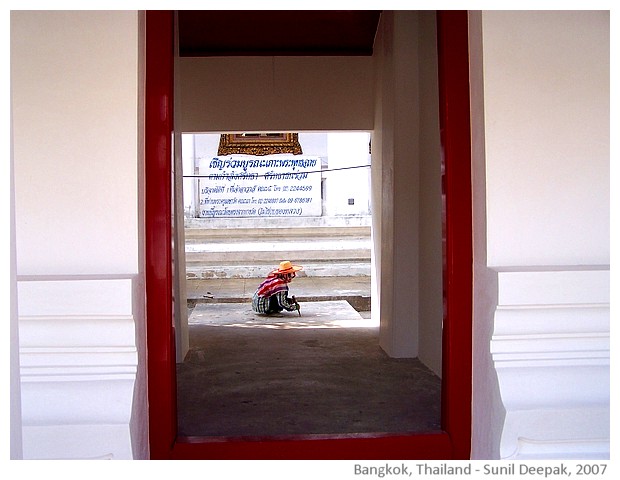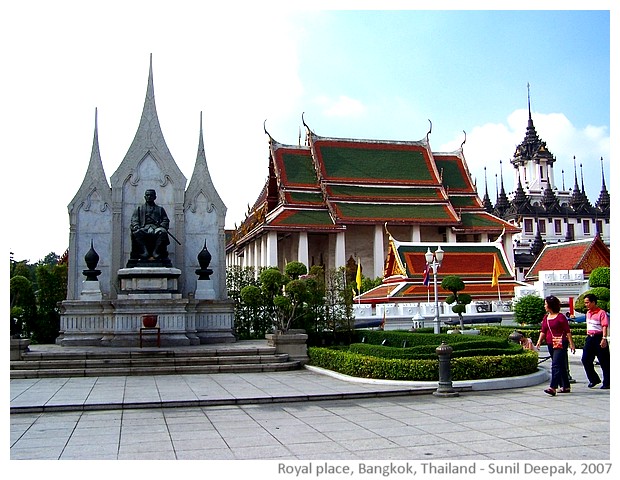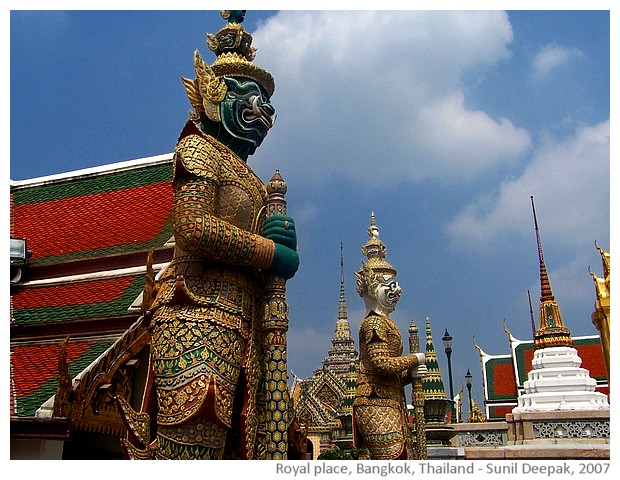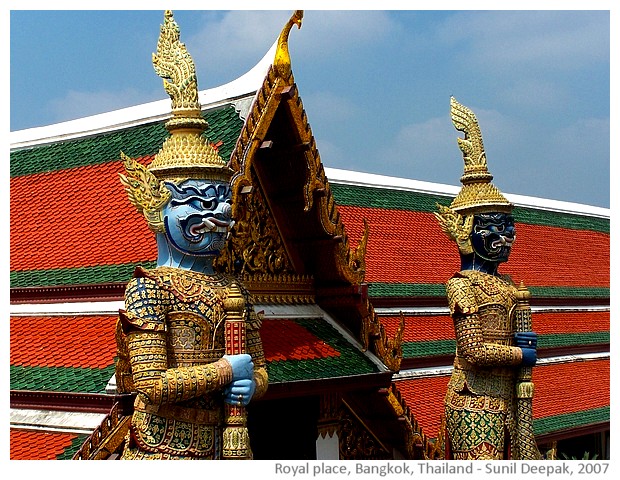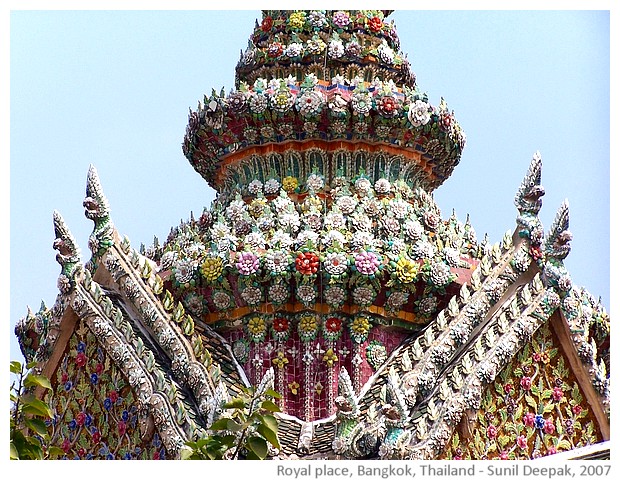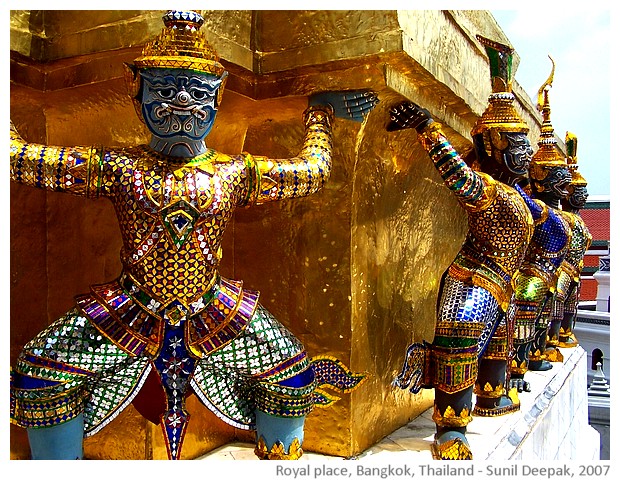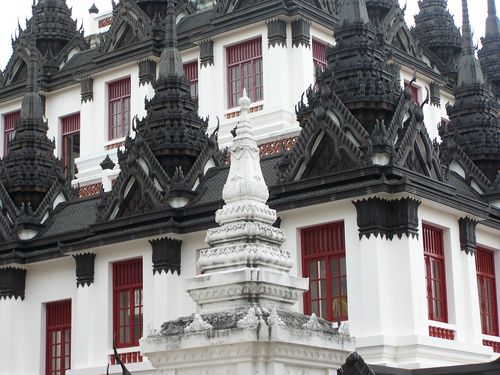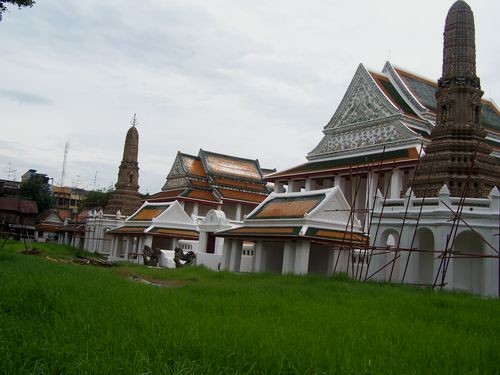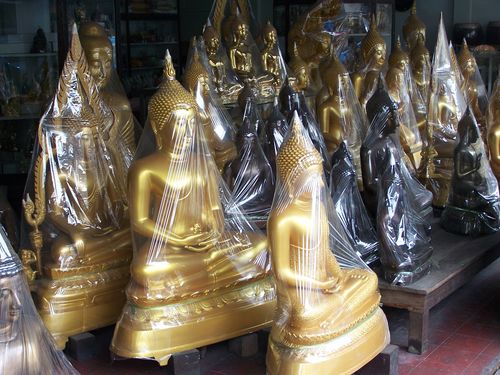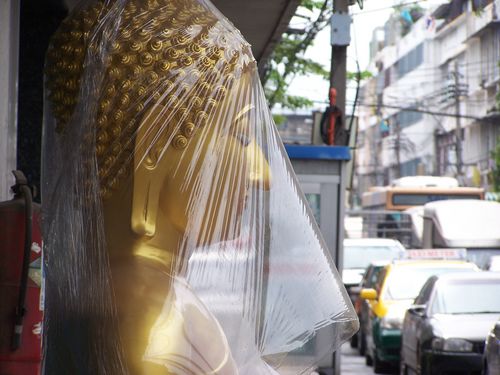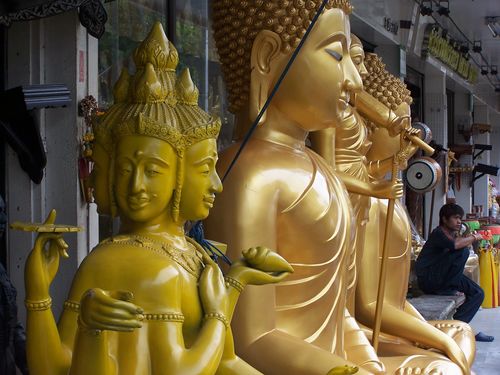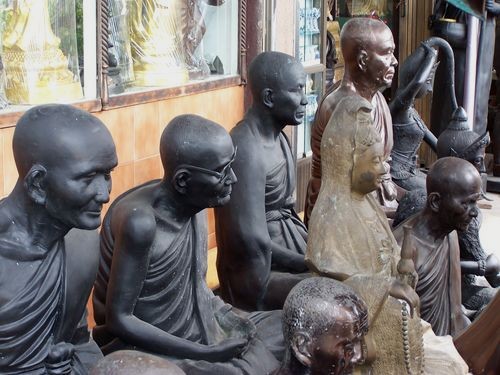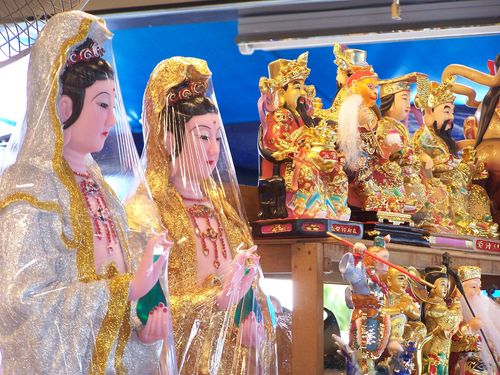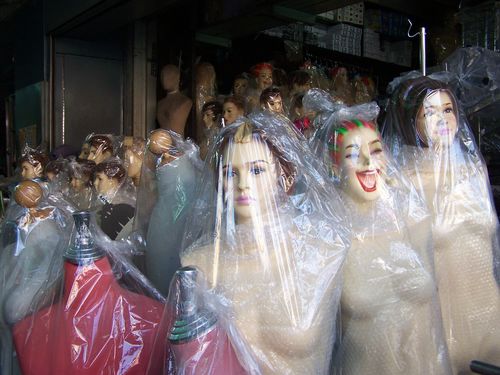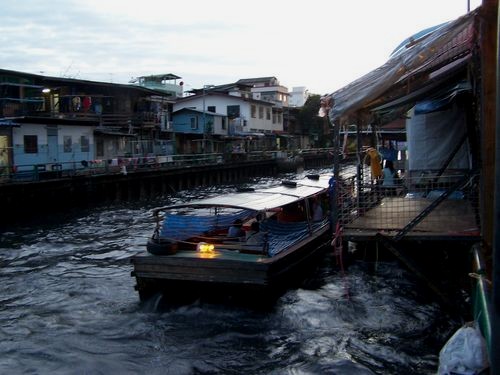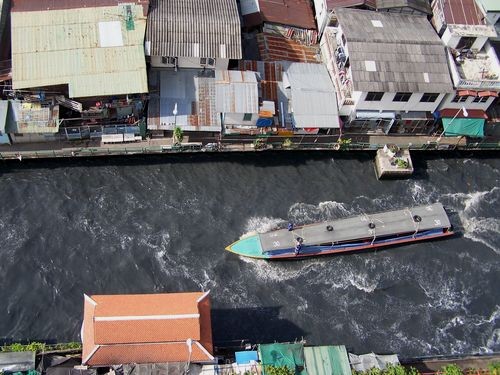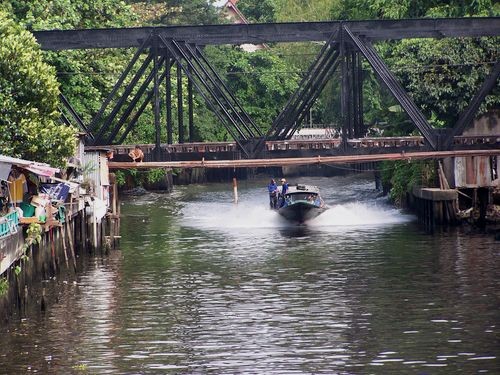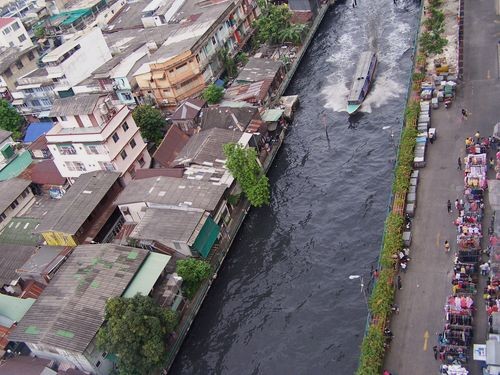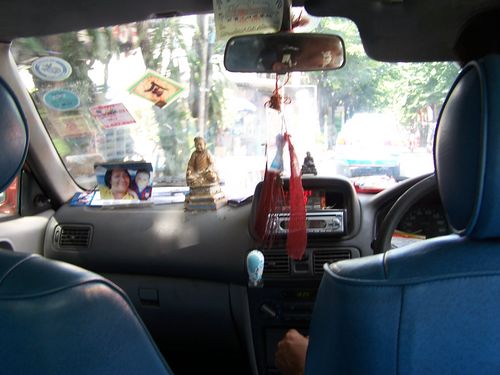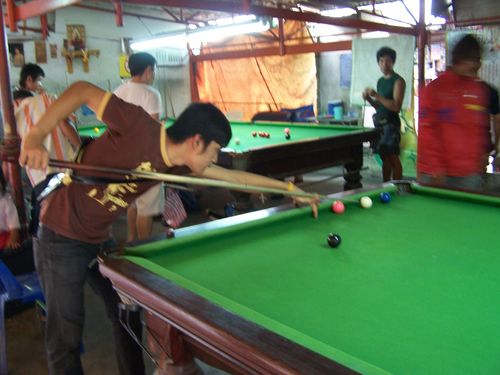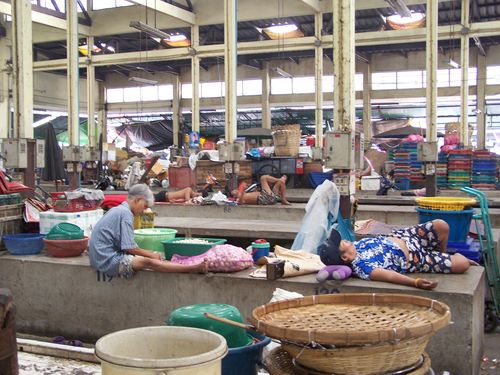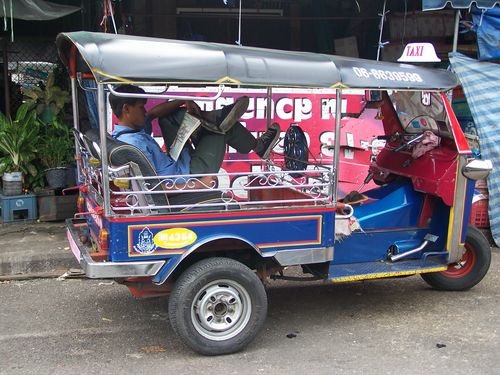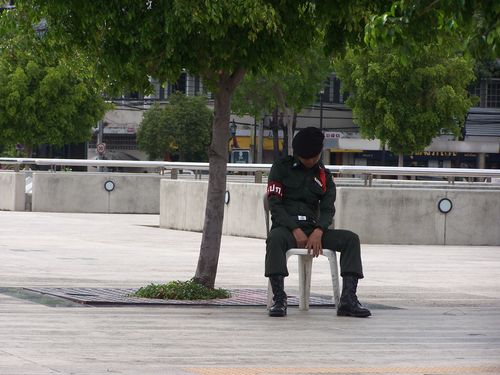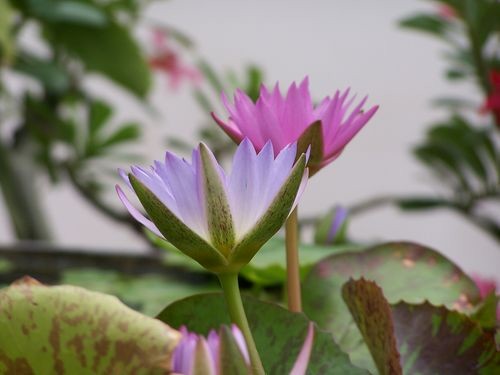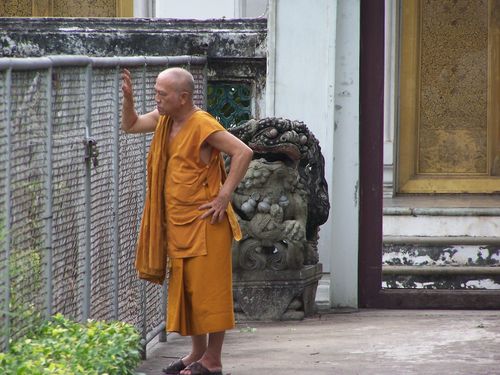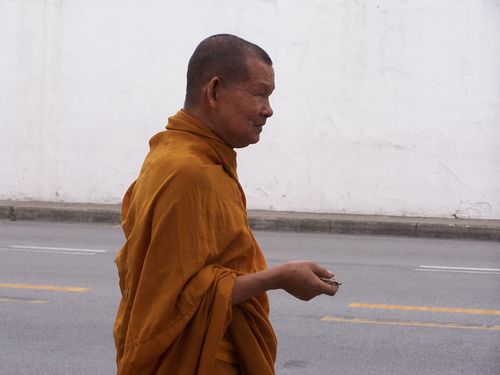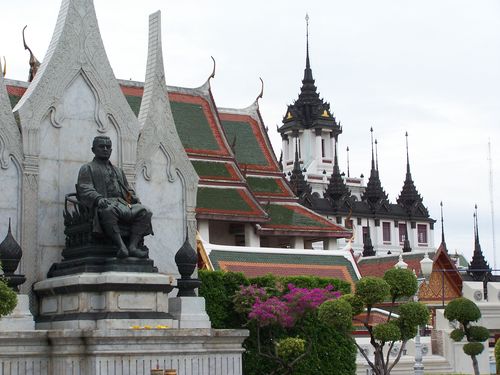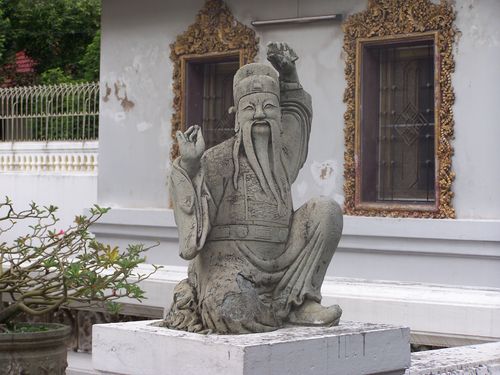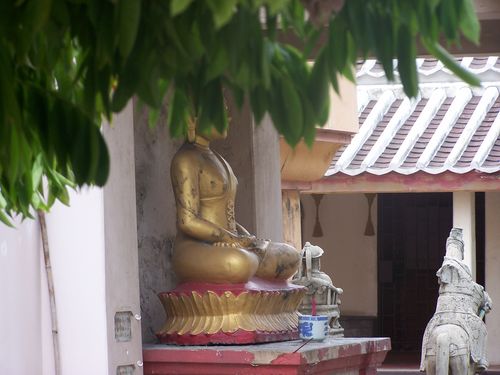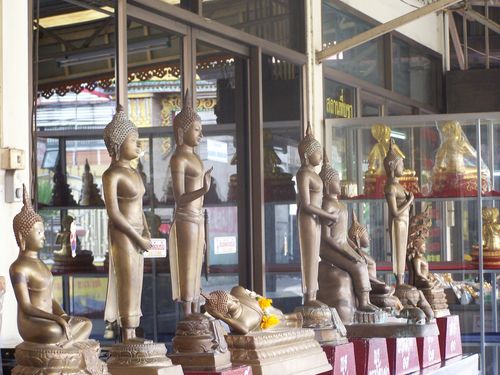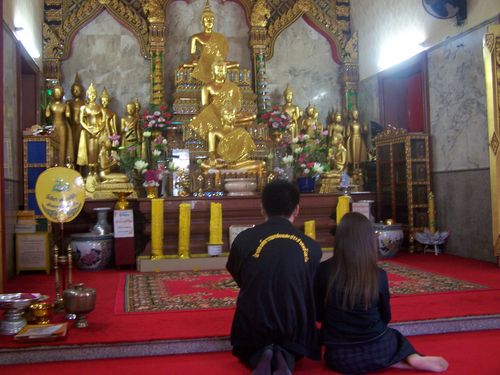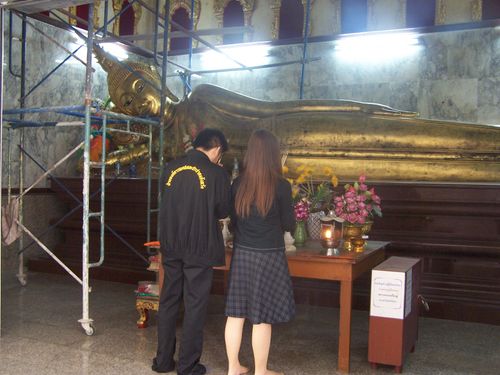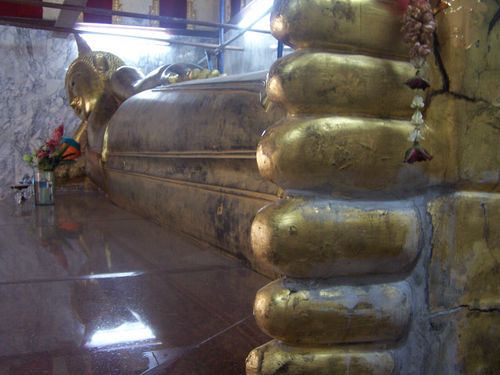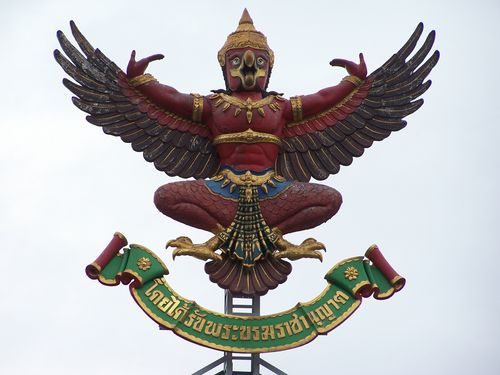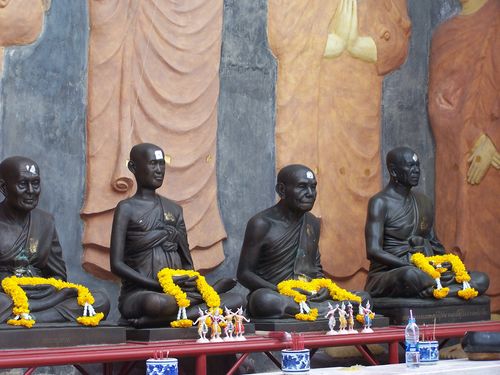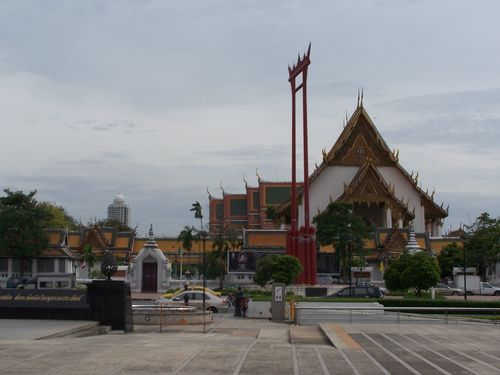Hindu epic Ramayana had a profound impact in East Asia, from Myanmar and Thailand to Indonesia and Vietnam. Even in China, the stories of Sun Wukong seem to be inspired by Hanuman in Ramayana.
The two Indic religions, Hinduism and Buddhism, travelled from India to ancient Siam (Thailand). The influence of Hinduism was earlier, leading to the popularity of Ramayana. Thus the kings of Siam took the name of Lord Rama, considered to be an Avatar of God Vishnu. Rama's kingdom was in Ayodhaya and thus, the capital of Siam kings was also named Ayotthaya.
Thailand shows the combined influence of Buddhism and Hinduism, where the two Indic religions have blurred boundaries. Many traces of this ancient Hindu influence are visible in the Buddhist temples of Ayotthaya today, like the statue of the God Ganesha at a small shrine in the Wat Phra Si Sanphet temple below.
Ayutthaya, located in the valley of the river Chao Pharaya, was the old capital of Siam (Thailand) till about 150 years ago. The city was founded in 14th century on a river island. The Autthaya kingdom had different wars with the Burmese kingdom. After one such war in the 18th century, the city was destroyed.
Visiting Ayutthaya
I was in Thailand for work and had only a few hours free to be a tourist. I decided to visit Ayutthaya, even if I knew that I will have little time to visit it properly.
I took an early morning mini-bus from the North Bus Stand in Bangkok and the journey took around an hour and a half. I only had about 2 hours for my sight-seeing in Ayutthaya. I decided to focus on visiting a few Buddhist temples in the area along the Muang river as it goes and joins Chao Pharaya river.
I had got down from the mini-bus near Chao Phrom market. There were elephant-tours to visit the city but I didn't have the time for a leisurely elephant tour. So, from the market I walked to the Uthong road, near the Muang river, where I rented a bicycle.
With a map of the old town in my hand, I started on my bicycle towards Wat Maha That temple. "Wat" means a Buddhist temple. Wat architecture includes spires (Prangs), Stupas (Chedi) containing sacred relics, and statues of Buddha and Bodhisattvas.
Suddenly on the right side of the road, I saw the ruins of an old Wat, which was not shown on the tourist map. It had a tall chedi and the broken head of big Buddha statue in front of it. I thought that it was very beautiful.
Wat Maha That is located to the east of the Grand Palace. At one time it was the royal temple. Buddha relics were enshrined in the main Chedi of this temple. The supreme patriarch of the Buddhist monks resided in this temple.
The monastery and the temple were destroyed by the Burmese in the 18th century. Thus, almost all the Buddha and Bodhisattvas statues at Maha That temple are headless and broken in different parts.
After Maha That temple, I went towards Wat Thammikarat. This temple area includes different buildings, old ruins as well as, a working temple. Some parts of this temple pre-date the establishment of Ayutthaya city, when it was known as Wat Mukaraj.
One of the first buildings of this complex is a bell-shaped Chedi with an octagonal base. It has a row of 52 royal Singhas (lions) all around it.
Wat Phra Si Sanphet
This was the most important temple of ayutthaya before its destruction in the 18th century by the Burmese. However, it did not start as a temple, rather it started as the first royal palace when Ayutthaya had become the capital in 1351. After about a hundred years, the royal palace was shifted to another building and this place was converted into a temple.
My visit to Ayutthaya was very brief. I could visit only a small part of the temple-ruins present in this beautiful town. The ruins of broken Buddha and Boddhisattva statues had a strong emotional impact on me.
The Burmese were also Buddhist, so why did they destroy the Buddhist temples of Ayutthaya? I don't know the answer to this question. Perhaps it was just for looting and not because they did not like the Thai religious ideas.
I wish one day to return to Ayutthaya and spend a few days there, going around the town, and soaking in its atmosphere of beauty coupled with destruction and timelessness.
***














